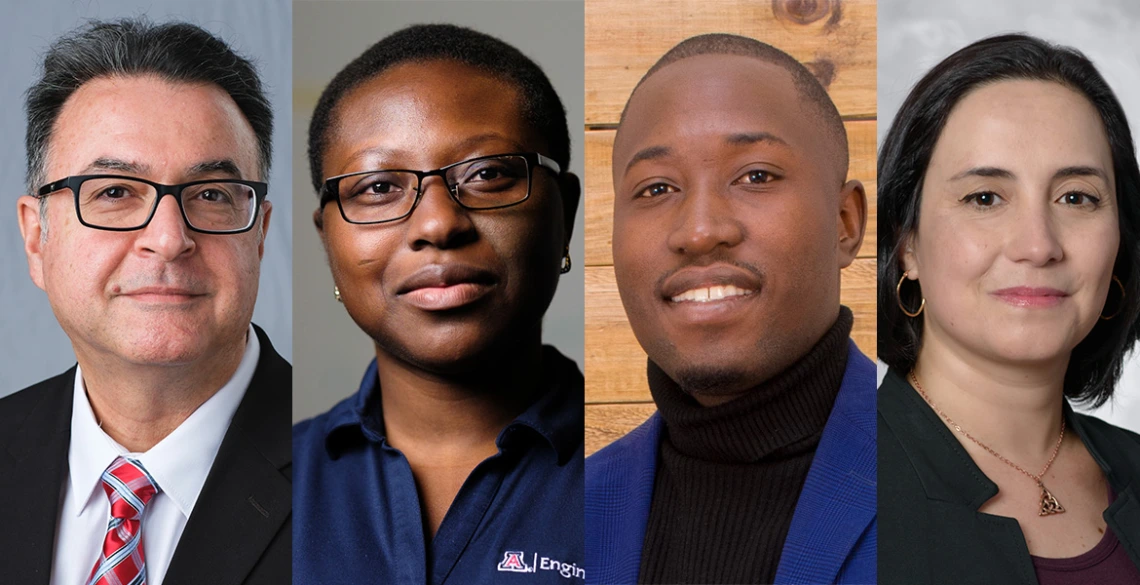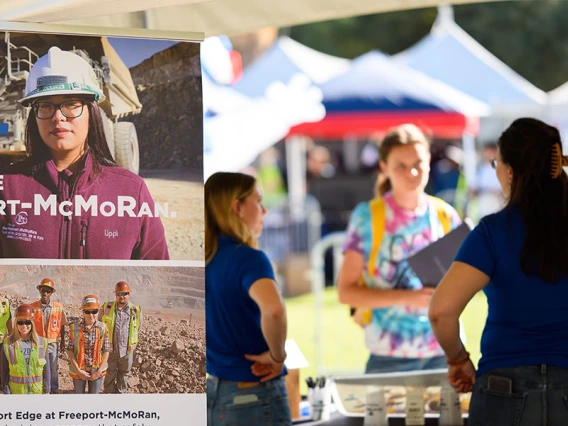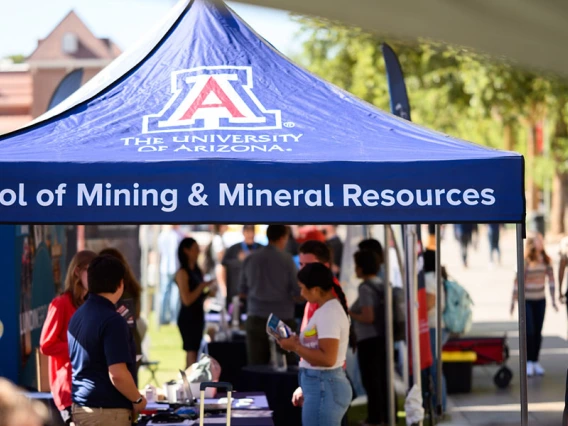CDC awards $1.25M to U of A engineers retooling mine production and safety
With the help of AI and advancements in below-ground mapping, Department of Mining and Geological Engineering researchers are modernizing U.S. standards.

Department of Mining and Geological Engineering faculty (from left) professor Moe Momayez, associate professor Angelina Anani, PhD candidate Tinotenda Blessing Chimbwanda, and assistant professor Nathalie Risso explore data techniques to improve mine planning and safety.
From mapping ore to predicting slope behavior and reclaiming land, mining is a rapidly evolving technological industry. Yet planning and operations have not necessarily kept up with the advancements.
With $1.25 million from the National Institute for Occupational Safety and Health, or NIOSH, mining and geological engineering researchers in the University of Arizona College of Engineering are boosting their efforts to better align technology and planning for improved safety and productivity.
The award from the institute, part of the Centers for Disease Control and Prevention, will fund the research of six U of A graduate students for the next five years.
"With this award, we are able to train graduate students in important areas and generate cutting-edge research that not only adds to the body of knowledge, but also contributes to the mining industry," said associate professor Angelina Anani, who is leading the project in partnership with professor Moe Momayez and assistant professor Nathalie Risso.
Increasing production at home
The demand for minerals on which technologies such as laptops and electric vehicles are dependent – copper, lithium and cobalt, for example – is at an all-time high. But according to the national Government Accountability Office, the United States is heavily reliant on foreign countries for its supply. By some estimates, more than 80% of the nation's minerals comes from foreign sources.
A renewed federal focus on American-made products and domestic supply chains is challenging the mining industry to increase productivity while continuing to prioritize worker safety.
These NIOSH-funded projects are geared toward improving the entire lifecycle of a mine – from rock assessment to post-mine land use – fundamentally changing how mines are planned and operated, said Anani.
Making better decisions, faster
Anani's group of researchers is investigating dynamic mine planning – a contemporary technique that feeds big data collected during production into artificial intelligence models – providing mine operators with information they need to make better decisions, faster.
"We have not figured out the best way to extract information from that data and apply it to operations in a sustainable way," she said. "Our idea is to take that data and update each stage of the mine planning process by using technologies such as machine learning."
For example, companies could use dynamic mine planning in slope assessments to better predict collapses, which are costly and put workers at risk.
Momayez is using advanced geotechnical methods to evaluate subsurface conditions and map ore deposits.
Presently, mines rely on exploratory boreholes to assess rock condition, but deposits can stretch for miles.
"We're focusing on using geophysical techniques to create a continuous map of geological properties and ore grade before mining," he said, adding that such mapping ties in to dynamically predicting slope behavior.
Aligning automation and safety
Nathalie Risso, director of the university's Mine Automation and Autonomous Systems Laboratory, also is keen on orienting operations to safety regulations and productivity.
"There are a lot of standard operating procedures that are associated with how the mining equipment is supposed to work," she said. "But when you have autonomy, those are not going to apply, so with this research we seek to create new methods to make mining safer and more productive."
The researchers are investigating how autonomous mining vehicles are used in other countries and will provide recommendations for updated regulations in the U.S.
"It is a reimagining of mine planning," said mining doctoral student Tinotenda Blessing Chimbwanda, who is working with Risso and Anani. "Autonomous vehicles bring new risks in terms of how they interact with other equipment.
"The whole idea about mining for me is to make sure that everyone goes home safe and uninjured."
Chimbwanda is one of the graduate students supported by the CDC award; funding is still available for five other students with professors Anani, Risso or Momayez serving as their advisers.



